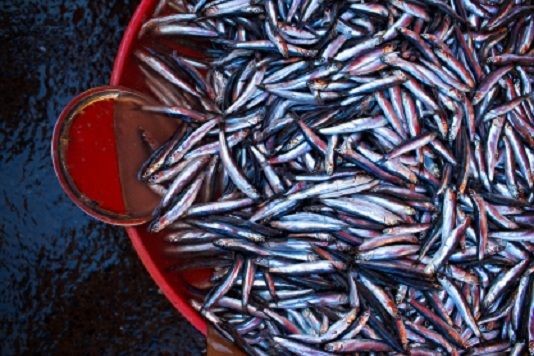Cantabrian anchovies - fancy fish?

Shopping around for good quality anchovies reveals how expensive they are, and therefore why restaurants charge so much.
The taste comparison Jose Pizarro has set up in Marylebone tapas bar Iberica is not at all fair. Pizarro is the co-founder of the wonderful Brindisa tapas restaurants and shop (I think he can be credited with kickstarting Britain’s love for proper, high quality tapas), and at one end of the table he’s opened a tiny, miserly tin of supermarket anchovies, which cost just over a quid and are what we’re used to here in the UK.
The rest of the table is spread with a selection of Cantabrian anchovies – the first we’ve seen over here in five years and each at least four times the size of their supermarket poor relations.
Plenty of tins of anchovies claim to be from Cantabria, harvested as the fish cross the Bay of Biscay in the spring and early summer. The reality is that this area has hardly been fished for five years because the stocks were perilously low. Numbers were considered suitably revived to allow fishing this year, and the catch has been stacked in rock salt for the past six months before being canned in olive oil.
The supermarket anchovies are very salty, and quite bony and tough. They’d be ok, if there were nothing else, and they’re the right thing to use for cooking: some judiciously-added anchovy will give a depth, richness and seasoning to many everyday dishes such as any ragu or Bolognese, a shepherd’s pie and even a vegetable soup, for a few pence.
Anchovies are the base of Worcestershire sauce and Thai fish sauce (nam pla) because they are so very umami – that fifth taste we can only translate as “savoriness”.
But the clean, melting indulgence of the Cantabrian fish should not be undermined by cooking. They speak for themselves, although you might want to level out their intensity with some good bread, a boiled potato or a tomato.
They are all very fishy, fat and supple. Some are more salty than others.
We tasted Hoya, Codesa, Emilia, Revuelta, Lolin and Don Bocarte, which was considered the best, and is canned in extra virgin olive oil.
The Spanish keep them in the fridge even before opening; once open eat within three days.
All have websites, but sadly only Don Bocarte and Lolin seem available to buy online. For the rest, I’m sure a trip to Cantabria won’t disappoint.
In the UK, The Fish Society has some Ortiz anchovies at a price (£7.50 for 50g) that suggests they’re good quality. They’re hand-trimmed too, as is the tradition in Cantabria. Brindisa also sells Ortiz, at £3.75 a 47g tin.
Shopping around for good quality anchovies reveals how expensive they are, and therefore why restaurants charge so much. Pizarro says he has paid £27 for eight fish, which then need to be cleaned.
Feeble Brits might be heard complaining that anchovies are “too fishy”. Indeed, that is indeed the sign of a good anchovy. Don’t share yours.
Also worth your attention:
Comments
Do you want to comment on this article? You need to be signed in for this feature